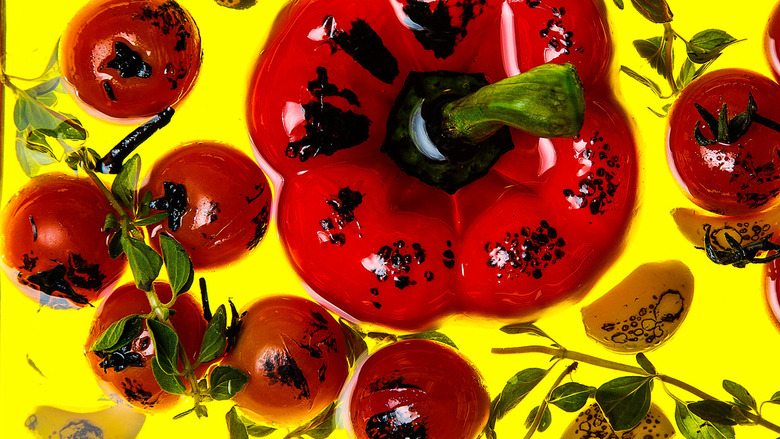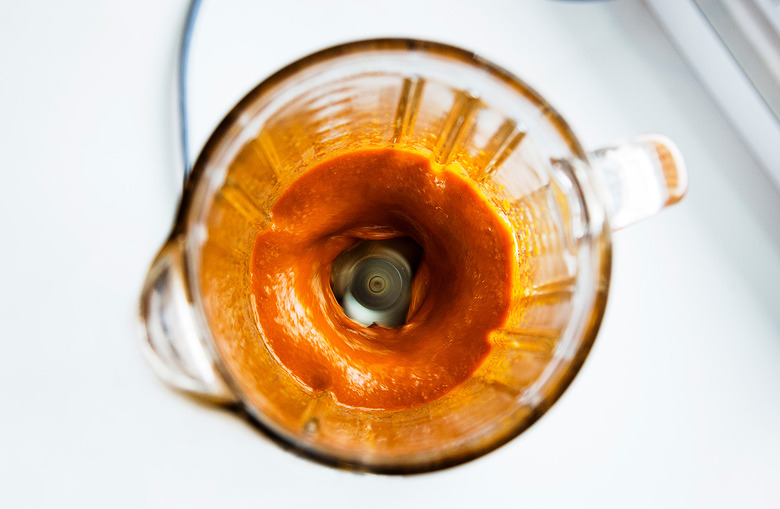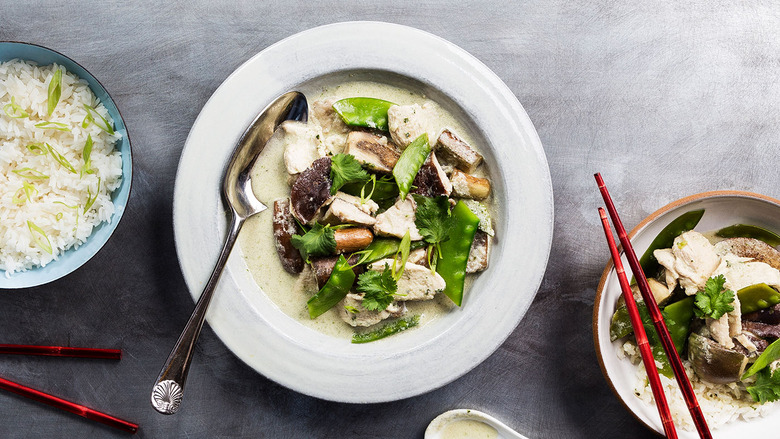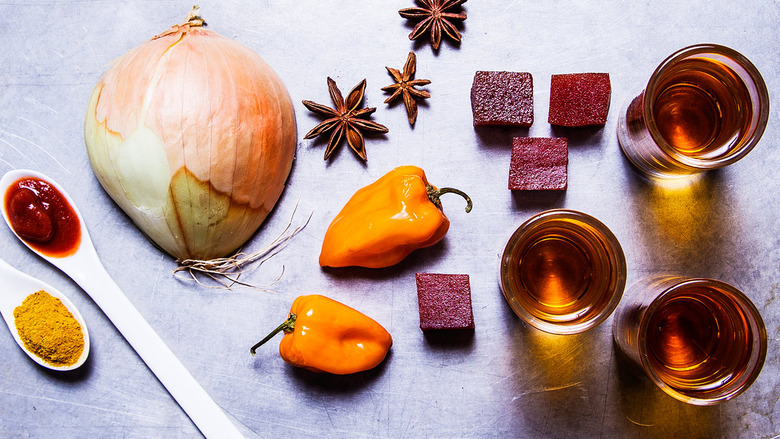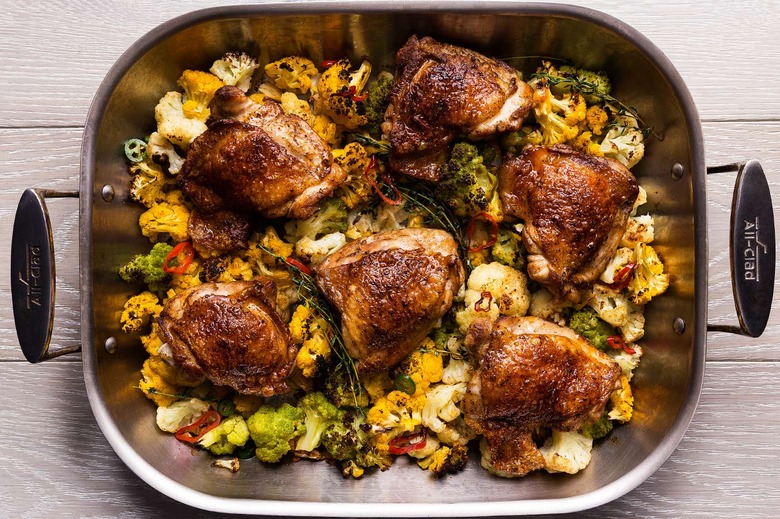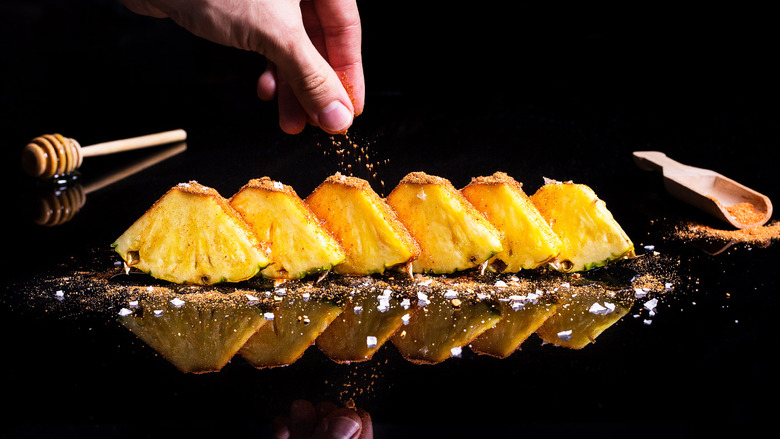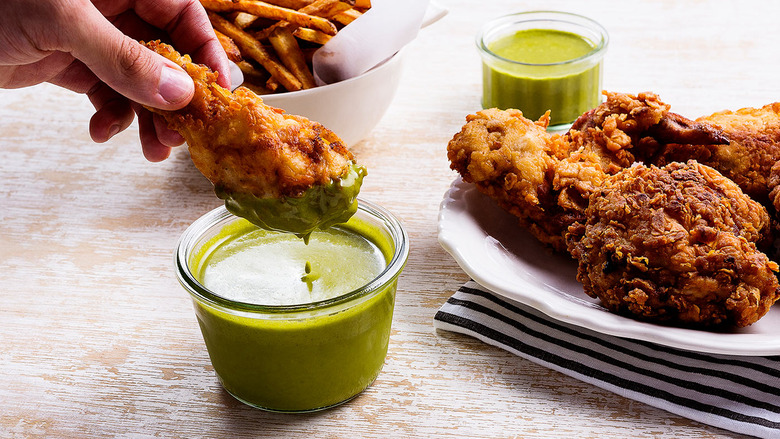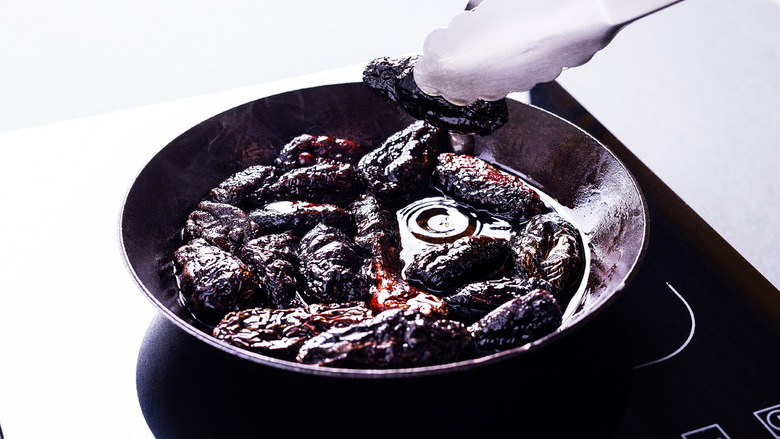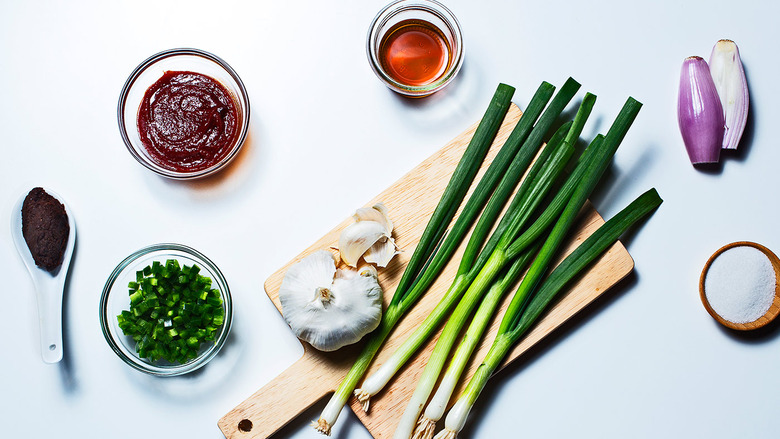How To Make Smoked Almond Butter
This smoky version of almond butter is perfect for packing up and heading outside
Matt Abdoo of NYC's Pig Bleecker goes a bit, er, nutty when talking almond butter, a spread the chef has come to perfect just in time for picnic season.
First things first: Plain raw almonds just don't cut it. Abdoo uses only Marconas, the rounder, plumper varietal often imported from Spain or Italy that packs a nutty, creamy salinity. Aiming for a super-silky texture, he bypasses the graininess of a raw purée by boiling or pressure-cooking the almonds first. And given that his background is barbecue, taking it one step further by adding smoke to the mix was inevitable.
Abdoo first smokes the Marconas with cherrywood at 175 to 200 degrees for about an hour, until they're slightly toasted and smoky. He then boils them until soft, purées them with some of the reserved boiling water, emulsifies them with oil, and seasons them with a touch of salt and sugar (see the recipe).
The resulting butter is creamy and smooth, and ready to be used in, well, "so many things."
Unlike the preservative-packed kind you buy in stores, Abdoo warns that his almond butter has a refrigerated shelf life of only three weeks—but with a secret weapon this versatile, we doubt it'll last that long.
Here are a few of the endless ways to put this creamy, homemade almond butter with a "smoked nuance" to good use.
① Adultify Your Snacks
Remember ants on a log? For a grown-up play on a childhood favorite, grill celery, fill it with almond butter and top it with vinegar-soaked raisins. This ain't your average snack break.
② Top Off Your Breakfast
Dissolve one teaspoon of confectioners' sugar per one tablespoon of almond butter, then top pancakes or waffles. "The texture of powdered sugar dissolves fast to make it creamy, and the starch in it helps it smear," Abdoo says.
③ Dress Up Your Dressing
"Almond butter vinaigrette works exceptionally well with things like braised kale, or spinach salad topped with raisins or cranberries and dried nuts," he says. "When you're making a vinaigrette that has almond butter, balsamic and just olive oil in it, you need a green that can hold up." Combine one cup of olive oil with one-third-cup of balsamic vinegar, then add in a tablespoon of almond butter to emulsify. Dress your greens, then top with dried fruits.
④ Give Fish More Flavor
Abdoo uses the butter to add depth to white fish like striped bass or fluke—fish that scream "for something with rich flavor and complexity."
RELATED Do It Right: Toasting Nuts "
For a simple accompaniment, use the purée straight up as a warmed sauce, smearing it on the plate underneath poached or grilled fish so that the two come together in one bite. Or use the butter as an adhesive for crusting the fish itself: Toward the end of the roasting process, smear a layer of almond butter on the exposed flesh, layer it with crushed almonds and bread crumbs, and continue roasting until crispy. "The smoke adds nuance and appeal that make it different and complex, playing with the delicacy of the white fish."
⑤ Create Creamy Vegan Pasta
Add a tablespoon of purée per two cups of cooked pasta as a one-to-one butter substitute, thinning it into a sauce with water or vegetable stock. "It gives the texture and mouthfeel that butter gives," he promises, "enhancing the richness of that base."
For a vegan play on a Genovese-style pasta—traditionally, pesto, potatoes, pine nuts and green beans—Abdoo subs out the pine nuts and butter, and replaces them with almond butter and more chopped smoked almonds. "The sweetness of the basil pesto goes well with the creaminess and nuttiness of the almonds," he says.
⑥ Roast a Rack of Lamb
Abdoo says his almond butter makes a killer crust for a rack of lamb, rib roast or pork chop, "but you don't want to start off the roasting process with the almond butter in it. By the time it's done cooking, the nuts will be burned," he warns. So he applies a layer of almond butter when the meat hits around 90 degrees, rubbing hearty herbs like thyme and rosemary on top of it. By the time the meat has cooked through to a final resting temperature of 115 to 120 degrees, the crust is golden and fragrant.


